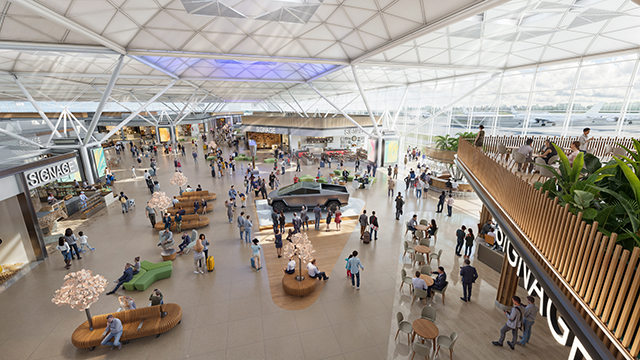Although unofficially in effect under planning policy, the requirement to provide 10% biodiversity net gain will become mandatory when Part 6 of the Environment Act 2021 comes into force in November (or April 2024 for small sites).
From that date, it will be a deemed condition of planning permission that the development for which permission is sought must meet the BNG objective – the objective being that the development achieves a BNG increase of at least 10%. The associated habitat, or enhancement, must then be maintained for 30 years.
Note these provisions apply only to England, although it is likely the other home nations will follow shortly with their own policies. There is an exemption for “householders” and the rules relating to smaller sites of nine or fewer houses on a site less than one hectare are slightly different.
BNG metric
In order to ensure the biodiversity value of a site is calculated in a standardised way, Natural England have published Biodiversity Metric 4.0. This is a calculation tool which, with the help of an ecologist, enables developers to calculate the present and projected future biodiversity value of a site, before and after development.
It can also predict how much biodiversity value certain habitat creation or enhancement works will create and, as such, is a helpful planning tool.
Examples of BNG delivery are diverse and can include larger scale elements, including the creation of dedicated habitat areas, such as meadows, wetlands, community allotments and orchards, and smaller scale elements, such as bird boxes and bee bricks.
BNG delivery can also be achieved in the construction of the built environment itself, through the inclusion of infrastructure like solar slate, ground source heat pumps, composting areas, and rainwater collection.
The required 10% gain can be achieved in one of three ways, or a combination of them. Namely, it can be achieved by carrying out habitat creation or enhancement works on the development site itself; creating or enhancing habitats in off-site locations; or buying statutory credits.
Where habitat is created or enhanced either on or off site, these works will need to be secured under a binding legal agreement.
The legal agreement can either take the form of a planning obligation (a section 106 agreement), or a conservation covenant (another concept introduced by the 2021 Act), and both will need to be secured for 30 years and registered as local land charges.
There will also need to be a habitat management and monitoring plan for the site, setting out the practical details of how the habitat will be managed over the 30-year period.
Off-site or on-site?
When considering which of the three methods to use, it should be noted that the government has made it clear that statutory credits are to be used as an option of last resort only, and they will
be priced deliberately unattractively.
The key consideration for many developers will be whether to utilise on-site or off-site methods.
The biggest challenge to on-site BNG will be space – the more space that is dedicated to habitat creation or preservation, the less there is for the delivery of built-out units.
Dedicating land to be used for BNG is also not a short-term or easily reversed option; what may otherwise have been development land will be tied up for at least 30 years, with the government expressing hope that “very few biodiversity gain sites are taken out of conservation management entirely at the end of their agreements”.
This uncertainty could explain why off-site BNG has been regarded by developers as more realistic, with developers having the choice of delivering off-site gains either directly on other land they own, entering into arrangements with third party landowners, or buying off-site gains from large habitat banks.
That said, the government’s consultation on the 2021 Act makes clear that the location of BNG efforts will be key – the notion that on-site increases should be “significant” is embedded into the 2021 Act and it is being said that local authorities are more likely to review planning applications with significant on-site BNG elements far more favourably than those using off-site BNG.
The consultation also made clear that even off-site gains should be delivered locally wherever possible: the metric rewards gains made within the same local authority and marks down those made in neighbouring (or even further afield) local authorities.
There is also a suggestion that statutory credits purchased outside the local authorities’ boundaries will be more expensive. It is hardly surprising that the government is incentivising on-site BNG, given that on-site measures go hand in hand with other government incentives, such as the Green Infrastructure Network, which aims to make green spaces accessible to all, and increase the climate resilience of our towns and cities.
The benefits of on-site
Where landowners do have sufficient land or are able to add land to planning permission sites to facilitate on-site BNG, not only does this have the “enabling” effect of making the development more attractive for the planning authorities to approve, but developments already utilising on-site BNG show it can also offer multiple ancillary benefits.
Where sites are well chosen and development layouts are carefully considered, land used for BNG can offer added value for the overall development, for example, screening parts of the estate from road and traffic noise.
The relevant facilities, such as community orchards and allotments, promote public use and involvement and can be used for leisure, health and educational purposes. BNG delivery in the built environment which has the effect of reducing domestic energy bills is also fast becoming an expectation for those buying new homes during a cost-of-living crisis.
Further, provision may also be made for the inclusion of the necessary services and works for the ongoing maintenance of these sites in the overall estate management structure – allowing for the employment of those with appropriate knowledge to foster the sites, with recovery of costs from the residential and commercial occupiers as part of their general estate charge.
It is surely likely the prospect of using land for on-site BNG will open up exciting possibilities, for landowners, developers and the ultimate occupier alike.
Rebecca Price is an associate at Farrer & Co











